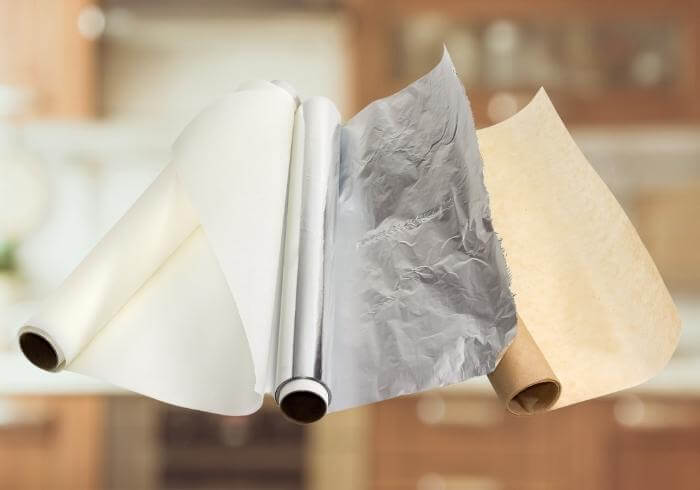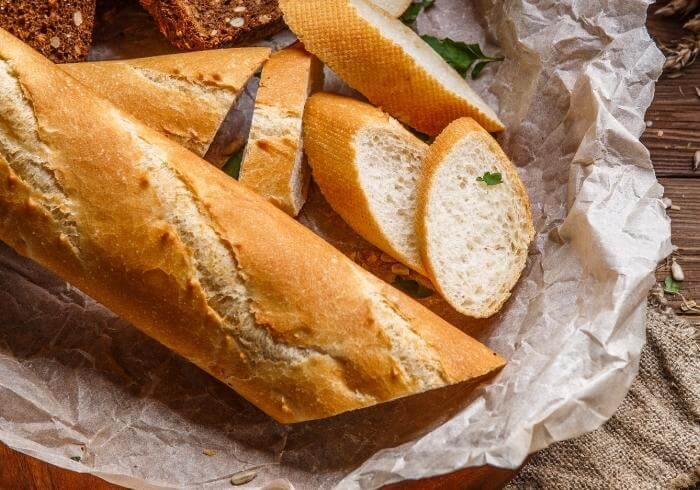You may have heard stories about parchment paper being toxic, but is this true? Well, not exactly.
If you use bleached parchment paper excessively, you may end up with some illness. If you use unbleached paper, you’ll be completely fine.
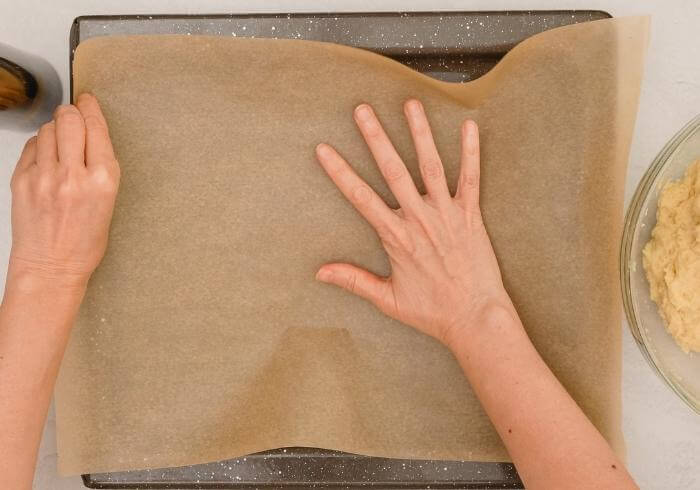
Let’s look at what makes parchment paper safe to use for your cooking and baking.
Can You Cook On Parchment Paper?
Of course! This is a must-have item for people who simply love cooking! Parchment paper can be used in your microwave, can go in the oven, or even in your air fryer.
Parchment paper can be used for many things, but it shouldn’t be used for broiling.
Most brands of parchment paper can withstand temperatures up to 450 degrees Fahrenheit. Broilers can become much hotter than this and cause the paper to brown or ignite into a fire.
Parchment paper is heat resistant and grease resistant, making it suitable for many cooking purposes.
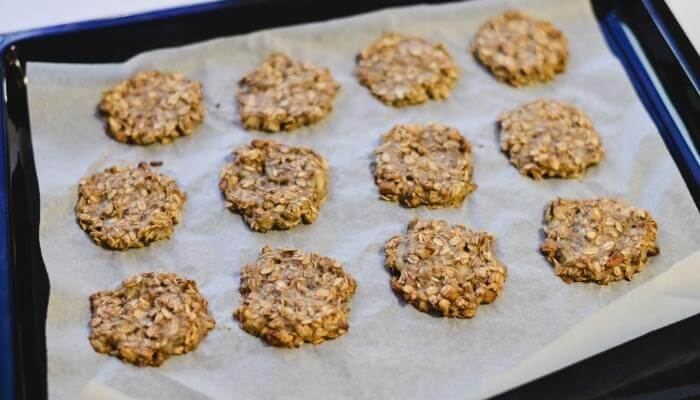
It can be used for baking desserts like cookies, cakes, and brownies. It can be used for roasting fruits and vegetables. You can even bake granola!
Parchment paper is great for making perfectly cooked food, but it also makes cleanup a breeze! No more greasy pans, and no more scraping that stubborn residue from your baking sheet.
Is Parchment Paper Toxic?
Depending on which type of parchment paper you are using, it could have an effect on your health.
I don’t have any issues with brown parchment paper when used properly. White parchment paper could potentially be dangerous under high heat or in ways it’s not designed for.
White parchment paper has been bleached with chlorine. Bleached parchment paper contains toxic substances known as dioxins, which have been linked to various health issues.
Wait, don’t throw it out yet! Although bleached parchment paper releases dioxin when heated, it is a very small amount. These trace amounts of substances aren’t harmful to our health, but they stay stored in our bodies for 7-11 years.
So, the amount can gradually increase and become a problem. Bleached parchment paper is only harmful when it is used excessively.
Simply put, if you use bleached parchment paper now and then, you’ll be completely fine. Just don’t use it excessively and use unbleached paper the majority of the time.
What Is Parchment Paper Made Of?
Parchment paper is made from cellulose fibers or other plant-based materials. It is submerged in sulfuric acid or zinc chloride to make it durable. It is also coated with an agent like silicone or Quilon to give it a heat-resistant, water-resistant, and non-stick surface.
The silicone coating is completely safe. It makes the paper stable and prevents your food from burning or sticking. The best part about silicone is it won’t melt or ignite (if the paper is used properly).
This makes parchment paper very different from wax paper. Wax paper is flammable and will ignite if it is used for baking.
Since the unbleached parchment paper is essentially paper coated with silicone, it is biodegradable. It isn’t harmful to the environment, and you can easily add it to your compost pile. How cool is that?
Here are some alternatives to parchment paper if you need a good substitute.
What Does Parchment Paper Look Like?
Parchment paper has two colors: White and brown.

White parchment paper has been bleached and processed with chlorine.
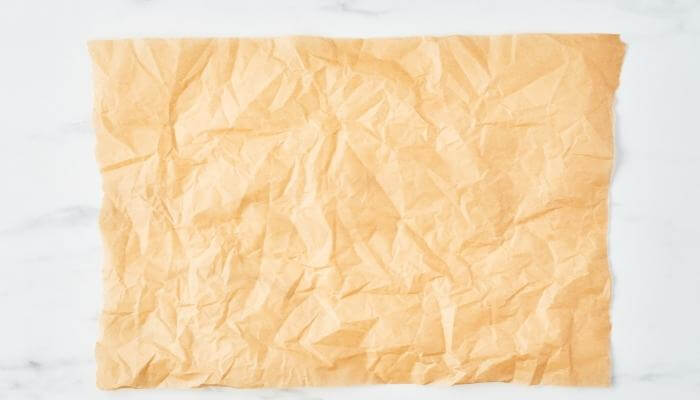
Brown parchment paper is chlorine-free.
It is translucent and somewhat dull, yet it is also shiny. It is an odorless paper made from cellulose and coated in silicone. You can find it in the baking aisle, along with aluminum foil and wax paper. It is packaged in a long, rectangular box. You can buy it in rolls or sometimes purchase pre-cut sheets.
Parchment paper is sleek and silky, but it is also strong. Even when submerged in water, parchment paper will return to its original color and texture.
Parchment paper looks very similar to wax paper, but the two should never be confused. They are both translucent and have a layer of coating on them. Wax paper is coated in wax, which is flammable.
What Makes Parchment Paper Nonstick?
Parchment paper is submerged in acid to make it non-stick and durable. Sulfuric acid isn’t the only thing that makes parchment paper non-stick; the silicone coating is also an important element.
Silicone creates a slick surface that does not absorb oil or grease. All of the oil stays on the surface, meaning your food will slide off.
Parchment paper creates a thin layer of air between your food and your baking pan. This helps distribute heat evenly and reduces the risk of burning. Less burning, less sticking.
Bleached vs Unbleached Parchment Paper
The two types of parchment paper are bleached and unbleached. Bleached parchment paper is white, and unbleached is brown. Bleached paper tends to be cheaper than unbleached, which is why some people may choose it over the other.
It all comes down to preference. Some people don’t mind using bleached parchment paper, while others prefer using unbleached. The color of parchment paper does not change the outcome of your food.
Although it may be cheaper, it is not the better option. Bleached parchment paper can release toxic substances known as dioxins when it is heated.
There are only trace amounts of dioxins in bleached parchment paper. It is not an immediate danger, but the number of dioxins can increase in your body over time.
Unbleached parchment paper does not contain chlorine or other potentially harmful chemicals. Unbleached parchment paper is the safest of the two.
Can You Eat Parchment Paper?
Technically, you could eat it. Parchment paper is safe for consumption, but I’m sure it wouldn’t taste very good. You likely wouldn’t eat a large amount before spitting it out!
Now, here is the more likely situation: Let’s say you made a fresh batch of brownies.
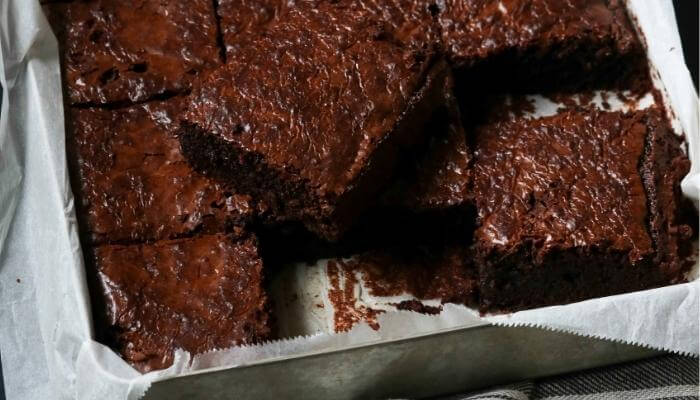
You take a bite of your tasty creation, but you feel a strange texture in your mouth. You brush it off and take another bite. The strange texture is still there. You take a look at the bottom of your brownie and realize some segments of your paper are stuck to the brownie!
So, is it safe? Will you be okay? You should be fine and not suffer from any adverse side effects. You likely wouldn’t even notice if you ate a small amount.
Can You Use Parchment Paper More Than Once?
You can use parchment paper more than once, as long as it isn’t overly messy, greasy, or starting to discolor.
You can actually use it several times. Of course, this applies to certain foods. You probably wouldn’t want to use the same parchment paper for another cake because it would likely have leftover crumbs from the previous cake.
If you wanted to make another batch of cookies, or even several batches, you could reuse the same paper as long as it is in good condition.
This also applies to dry ingredients like granola. You could easily reuse the same paper by wiping off the remains from the previous batch to avoid burnt crumbs.
Final Thoughts
Parchment paper is great for cooking and is a chef’s best friend!
Parchment paper is generally safe to use. Some people like the unbleached paper, others like the bleached paper. Either way, it is important to be aware of the risks.
Parchment paper is made from cellulose and is coated in silicone. This silicone is completely safe and makes the paper non-stick and durable.
You can even reuse the parchment paper in many cases!


